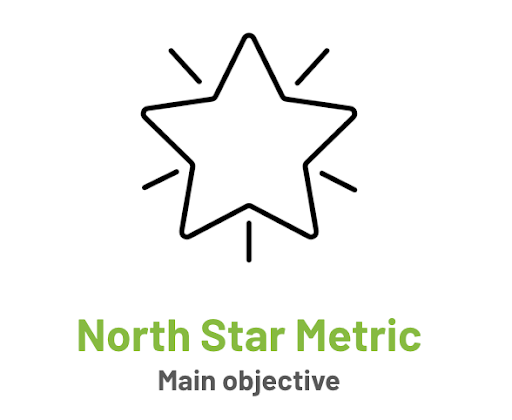Implementing Product Analytics

Understanding digital products and how customers use them is key to creating stellar products. Lucky for us, product analytics tools allow us to capture and visualize this information rapidly and translate it into effective decision-making.
If you are new to product analytics, you may want to check our blog on Introduction to Product Analytics first.
Implementing product analytics for your business can seem like a daunting task, which, if not done properly, can become another resource-draining project for your business with minimal actionable insights. So, let’s walk through the recommended steps to implement product analytics effectively:
1. Become aware of your business context
When starting off, it is important to acknowledge that each business is unique and has a different set of objectives, goals, and vision. Hence, the implementation of product analytics needs to align with your business’ respective goals.
Become context-aware by understanding your business first. You may want to ask yourself the following questions:
What problem is my product solving?
What is the long-term vision for my business?
Who is the target audience for my product?
What challenges does my industry face?
Who are the industry leaders for my product domain?
Answering these questions will help you align your product analytics implementation with your business needs. Now you will understand what you need to know about your product and the improvements required.
2. Understand your product: draw a customer journey map
The second step is to understand your existing product. The best way to do that is to chart out a customer journey map. This map lists all the actions your user takes or the screens/webpages they view in a sequential manner. Understanding this user flow is important in understanding your analytics so make sure you draw this in significant detail. This will be your reference point when you get to step 4, which is defining your sub-metrics.

Fig 2. Example of a basic customer journey map on an e-commerce platform (Note: this is definitely not detailed!)
3. Identify your North Star Metric (NSM)
Identify your product’s end goal. This links to step 1, where we tried to understand why we created our product and what we want to achieve through it.
To translate this idea as a product term, ask yourself what’s the one action that you always want your user to take/increase. This will become your north star metric: the core metric you want to improve (which is key to driving your business).

For e-commerce, the north star metric will be “purchases completed”. Everything becomes a secondary objective which is in some way trying to eventually improve the north star. Improving the search feature, the homepage listings or the checkout process are all improvements aimed at making a user complete a purchase. So, a good digital product will be designed to make the user easily and repeatedly complete purchases.
For Spotify, the north star can be “soundtracks played” while for Netflix it can be “videos played”. Be sure to spend some time at this step to find the right north star metric for your business. This is perhaps the most important step in getting your analytics right.
4. Define your sub-metrics
Once you have the north star sorted out, start understanding how you can make users improve the north star metric? We will call these secondary objectives sub-metrics that help us improve the main objective.
A good way to identify sub-metrics is to look at your product as an amalgamation of different modules. You can identify these modules through your customer journey map drawn in step 2. Subsequently, you can list metrics that you want to improve for each module.
Let’s follow the same example of an e-commerce platform. We can identify the following modules in a basic e-commerce product:
- Login/signup
- Product search
- Product catalog
- Cart checkout
- Rewards & loyalty program
- App settings
Each module has its own set of user events, user flows, and link toward the main objective. E.g. cart checkout is detrimental to completing a purchase but general app settings may not be as important. This would depend on your product and the industry norms.
Once you have the modules, you can list the metrics, which help you quantify the efficiency of the module’s performance. It’s key to refer to your detailed customer journey map at this step to understand the intricacies of your product. Good metrics capture product performance and quantitatively reflect any improvements which take place in the product.
Let’s zoom in on the Search Module to understand this better.
How do we quantify user behavior here? You may want to ask the following questions:
- Percentage of daily users using ‘search’ – This helps us understand how many people continue to use the search feature. Any sharp changes in this trend can indicate breakage or improvement which may require further inquiry.
- Search to add-to-cart ratio – This helps us quantify the users who actually find the product they were looking for and successfully place it in their cart.
- Time spent on ‘search’ – This helps us understand if it’s taking users too long to locate products. Benchmarking with the industry’s average search time will further contextualize this information.
- Time taken for search results to display – A long loading time will be a red flag for your platform whereas quick displays mean users don’t have to wait to see products.
- The average number of search results displayed – If a lot of customers are unable to see any search results, they may be at risk of leaving the platform. Not being shown any products can be bad for product discovery as well.
This was not an exhaustive list of metrics and can vary across products. The key is to only list relevant metrics and not create a long list for the sake of completeness.
5. Integrate a product analytics tool
At this step, you have a list of sub-metrics for each module that you want to measure and visualize through a tool. So, first, look for the right product analytics tool. You may want to compare pricing plans, analytics capabilities, and use cases to find the right fit for your product. Some common tools used in the industry are Google Analytics, Mixpanel, Pendo, and Heap.
To integrate this tool, you will have to identify the events you want to track along with their event and user properties (discussed here). Refer to your customer journey map and sub-metrics list for this activity.
Continuing our example on the search module, we may want to have the following events:
- Searched – upon submitting a search request (event properties could be “search word used”, “auto-suggest-selected”).
- Clicked search bar – upon clicking the search bar.
- Search results screen – displays search results (event property could be “number of results displayed”).
Again, remember to keep this list manageable and only include events and properties that may give you valuable insights. Be sure to check your pricing plan for any limitations at this step. Your tool provider and development team can handle the rest.
6. Visualize, learn, and improve
Once you have your tool integrated, you can visualize all your sub-metrics and your north star metric to effectively track, benchmark, and improve your metrics. Insights from these visualizations can become very powerful in improving your product.





